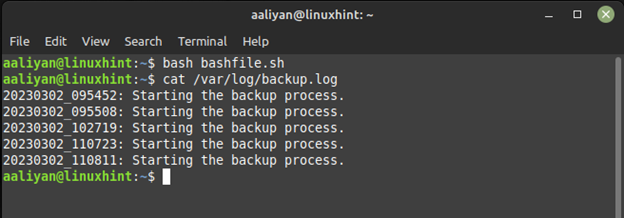In this article, we will discuss how to create a timestamp variable in a Bash script and use it in various scenarios.
Creating a Timestamp Variable
The following code shows how to create a timestamp variable in Bash:
TIMESTAMP=$(date +%Y%m%d_%H%M%S)
echo "Timestamp: $TIMESTAMP"
In the above example, we first define the Bash script interpreter #!/bin/bash. Next, we create a variable called TIMESTAMP using the date command. The %Y%m%d_%H%M%S format string specifies the date and time in the format of year, month, day, hour, minute, and second, separated by an underscore:
How to Use the Timestamp Variable
One application for using the timestamp variable is to log the start of a backup process. By adding the timestamp to the log file, we can easily track when the backup process began. This is useful for troubleshooting and analysis, as it helps us identify any issues that may have occurred during the backup process.
TIMESTAMP=$(date +%Y%m%d_%H%M%S)
echo "$TIMESTAMP: Starting the backup process." >> /var/log/backup.log
The >> operator is used to append the output to the end of the specified file, which in this case is /var/log/backup.log. By using the timestamp variable in the log message, we can easily identify when the backup process began.
Conclusion
In this article, we discussed how to create a timestamp variable in a Bash script and use it in various scenarios, such as logging and file management. Timestamps are a critical component of many automation tasks and can be easily created using the date command. By using timestamps, you can keep track of when certain events occurred, which is crucial for troubleshooting and analysis.


